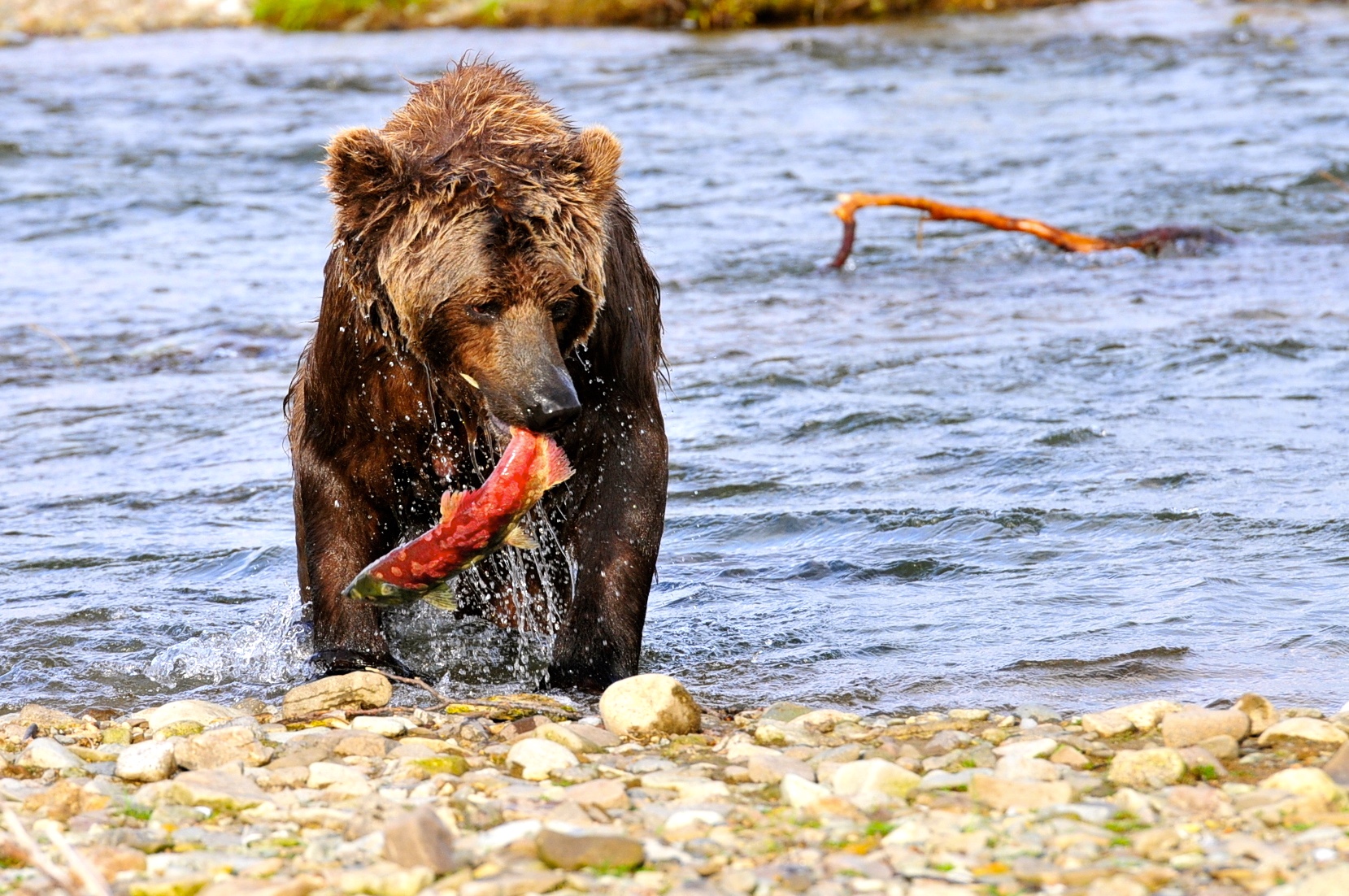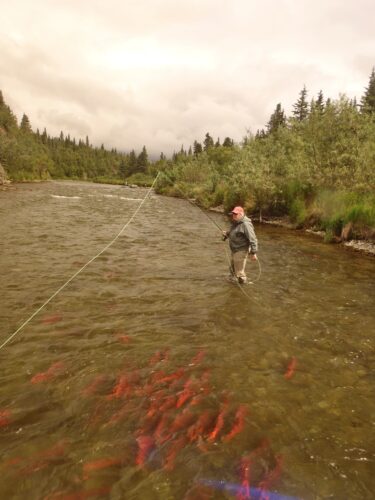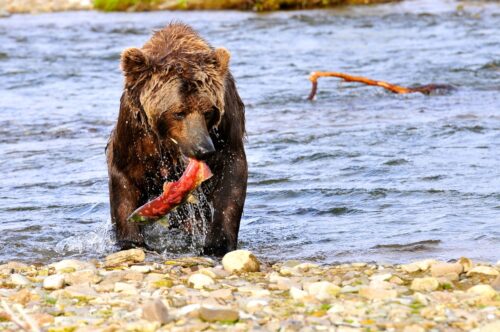I often get asked a series of questions when customers are considering our fish. Is it wild? Is it sustainable? And how do you know? The state of Alaska has made it very easy for me to answer!
- Bristol Bay Alaska- Home to the world’s largest run of wild salmon
When Alaska wrote it’s constitution in the 1950’s they intentionally wrote sustainability of its fish stocks into those founding documents. Outside of the oil industry, the fishing industry is the second largest revenue stream for the state. Alaska does an incredible job monitoring its salmon stocks by opening and closing sections of ocean and river in order to maintain a sustainable wild stock of salmon. Before the commercial fishing season can get underway, the rivers that make up Bristol Bay have to reach “escapement goals” (escapement is the amount of fish that have to make it “in river” to spawn “aka reproduce”). This ensures the river system can thrive year after year.
- Fishing for rainbow trout around spawning sockeye salmon
As a sport fishing guide or angler, you think more fish is better. But from an ecological standpoint, that is not the case. If the state didn’t actively manage those rivers through commercial harvests and escapement goals the rivers could potentially overfill with salmon. Over time, a crowded or vacant river will cause a sporadic return of migrating salmon. A bunch of salmon one year and not many the next. By properly managing these rivers, every year there is a consistent volume of returning salmon.
Case in point. Last year, Bristol Bay, Alaska which is home to the world’s largest salmon migration, not only experienced record commercial harvests, they experienced a record migration. An estimated 330 million salmon returned back to this area! This biomass from the ocean not only provides the state and the fishing industry a revenue stream, but provides the rest of the wildlife what it needs to survive.
Alaska would be relatively barren without this eon long salmon migration. As the glaciers retreated during the last ice age, the state was left barren with large deposits of gravel, sand, and silt. Without this salmon migration, and the oceanic nutrients they bring inland, the tundra would not have formed. Without the tundra, the caribou and ground squirrels would have no forage. No prey means no predators. The wolves, foxes, and eagles would have nothing to eat. And let’s not forget about the infamous brown bear! No fish, no bears. All that being said, without salmon, the Alaska we know today, would not be nearly as appealing.
- Brown bear with a spawning sockeye salmon in Bristol Bay area
I have always thought that salmon were the 8th wonder of the world. Pyramids and greek pillars are cool, but salmon. Let’s be real! I’d take the salmon any day!
My advice… Eat Wild.






Recent Comments